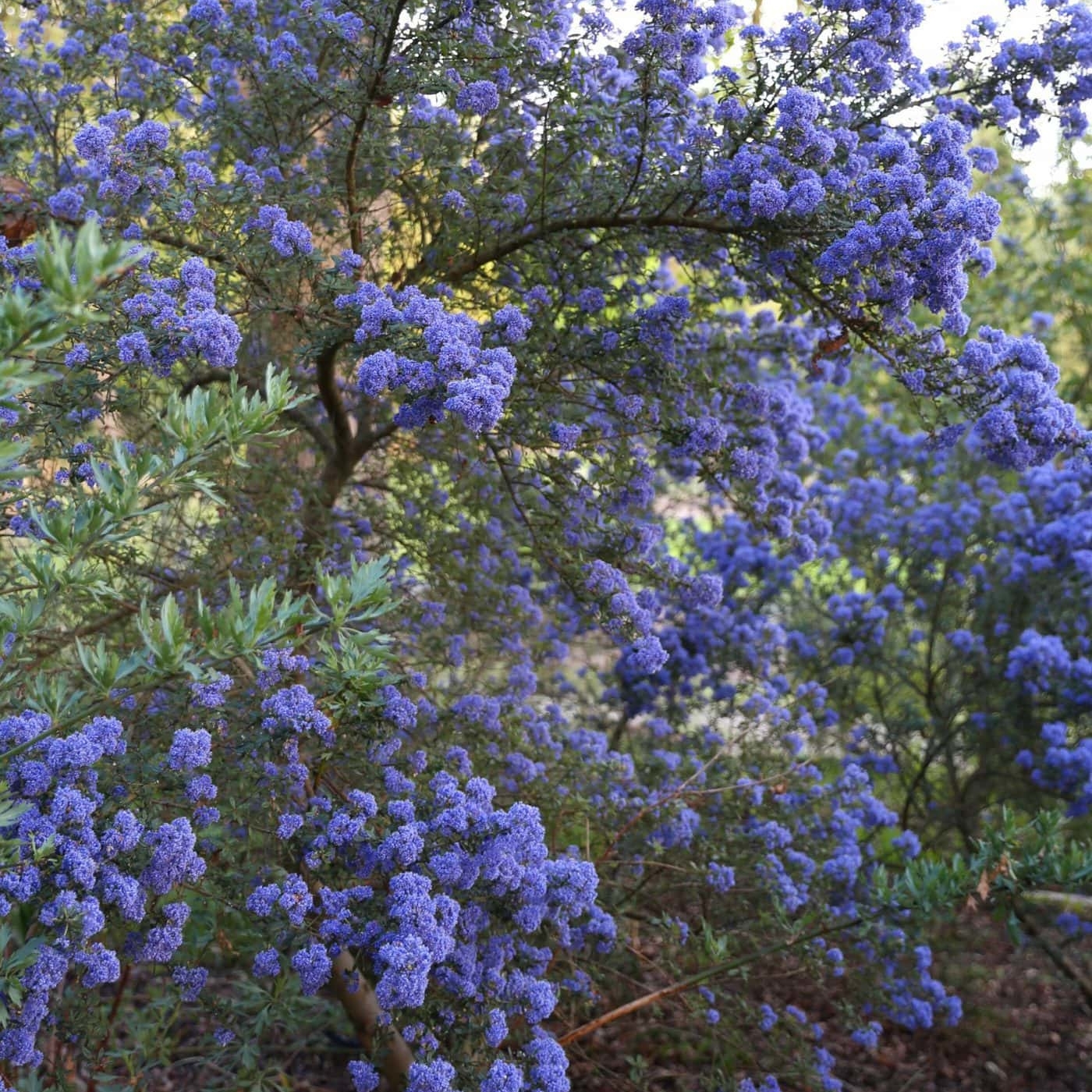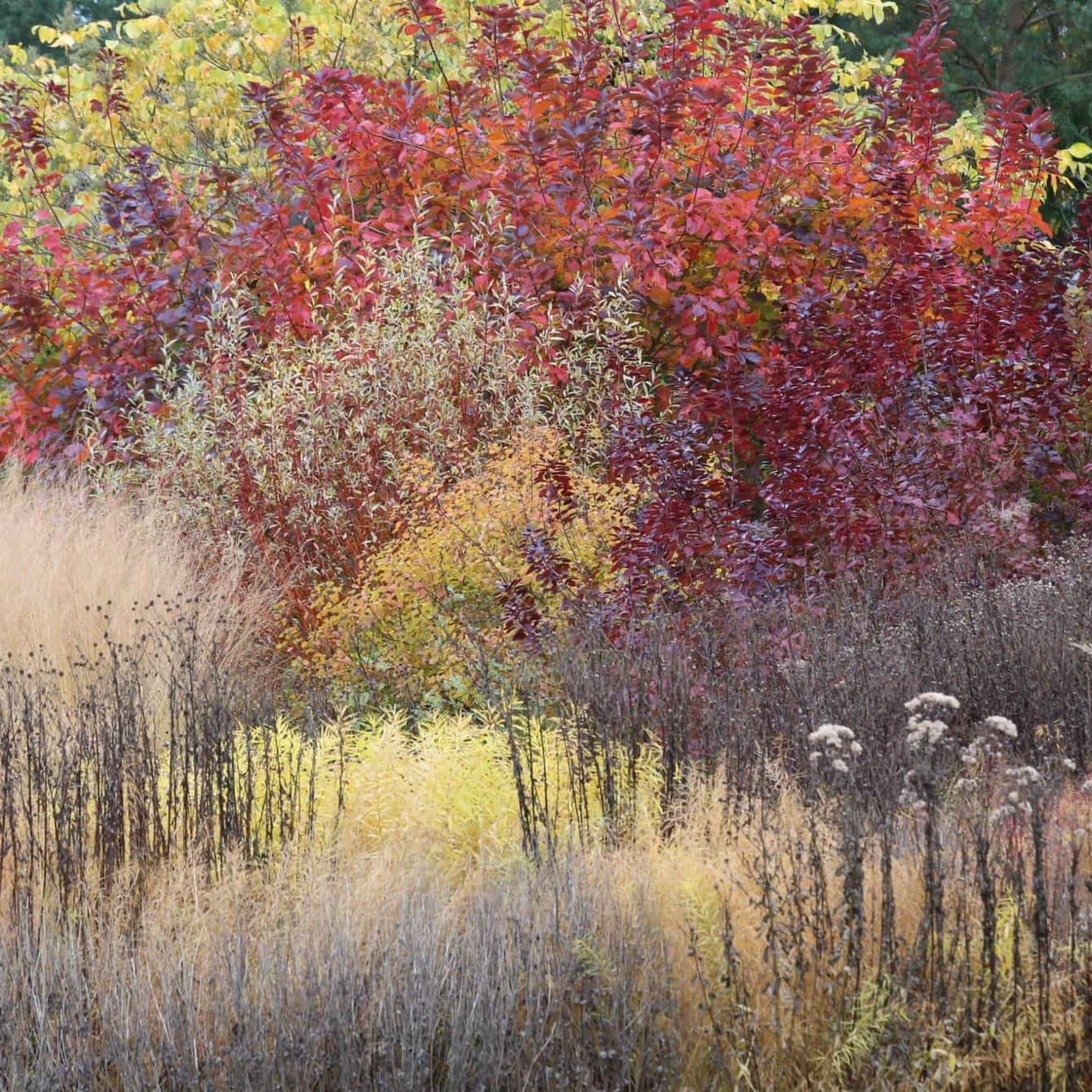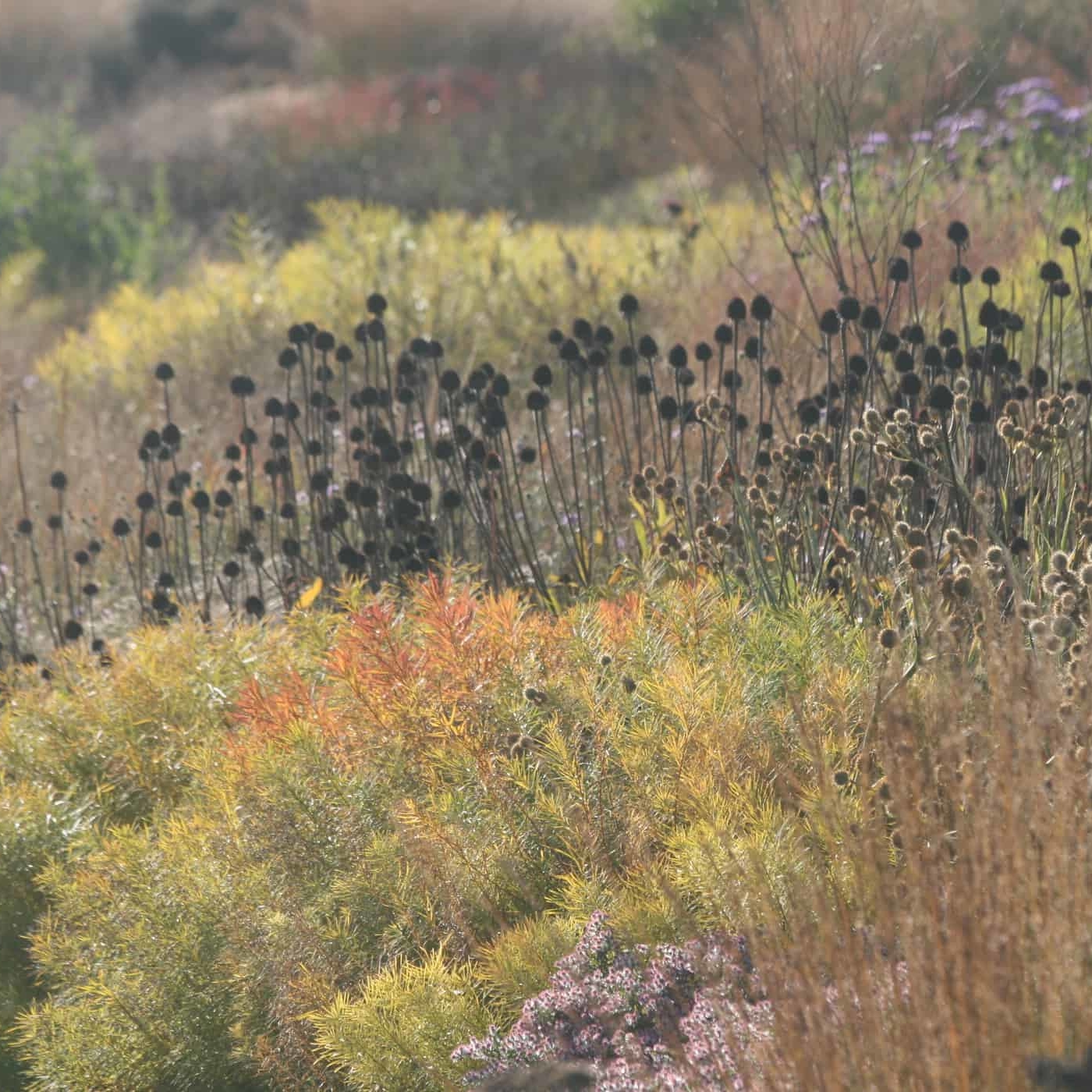Trees And Shrubs With Autumn Attitude

In late October, I had a very fortunate chance to visit Cherry Tree Arboretum, one of the country’s best private collections of trees and shrubs. The 50 acre site in Cheshire was only planted in the last 17 years or so, by John and Elizabeth Ravenscroft. The focus is primarily on spring blossom and outstanding autumn colour.
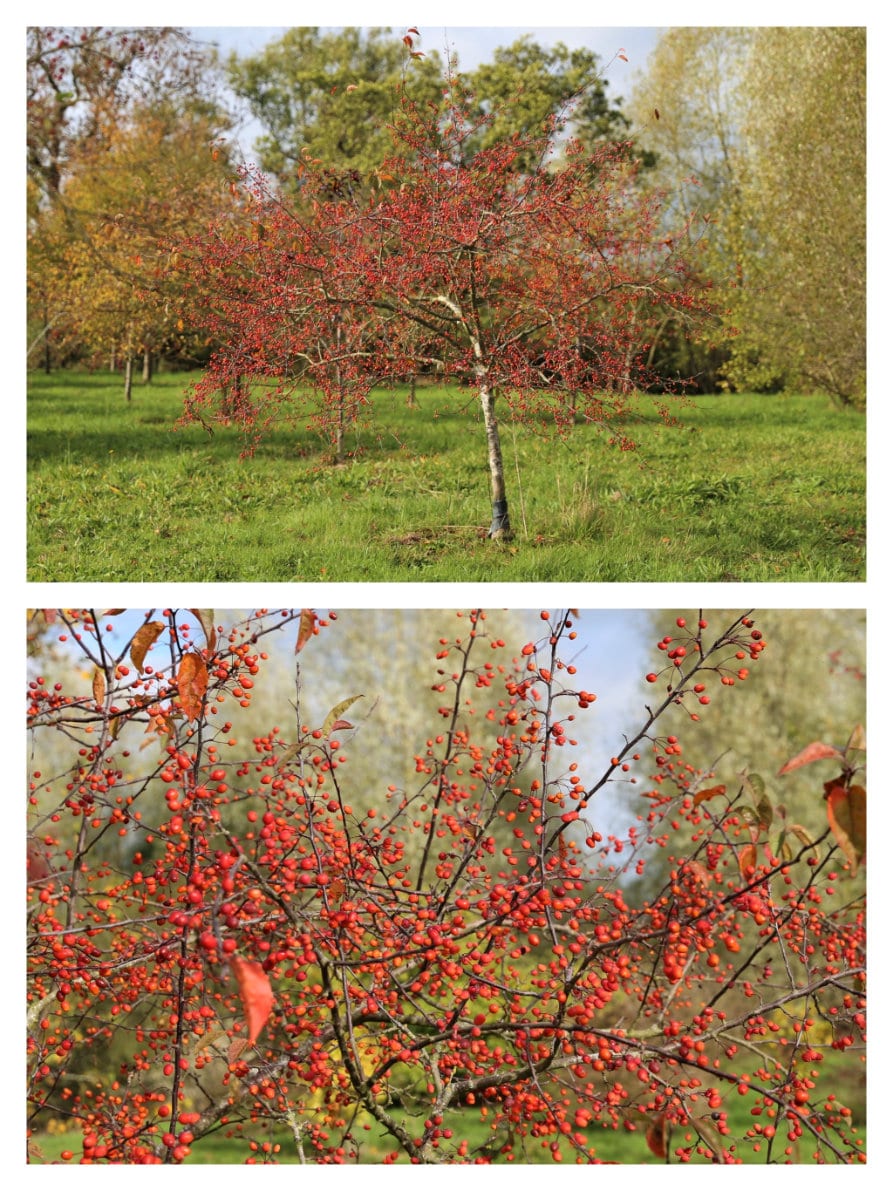
This haze of tiny scarlet crab apples mature to an orange colour as they persist into the new year. In spring, dark red buds open to flat-out-fabulous pink blossom in April, as purple new foliage emerges.
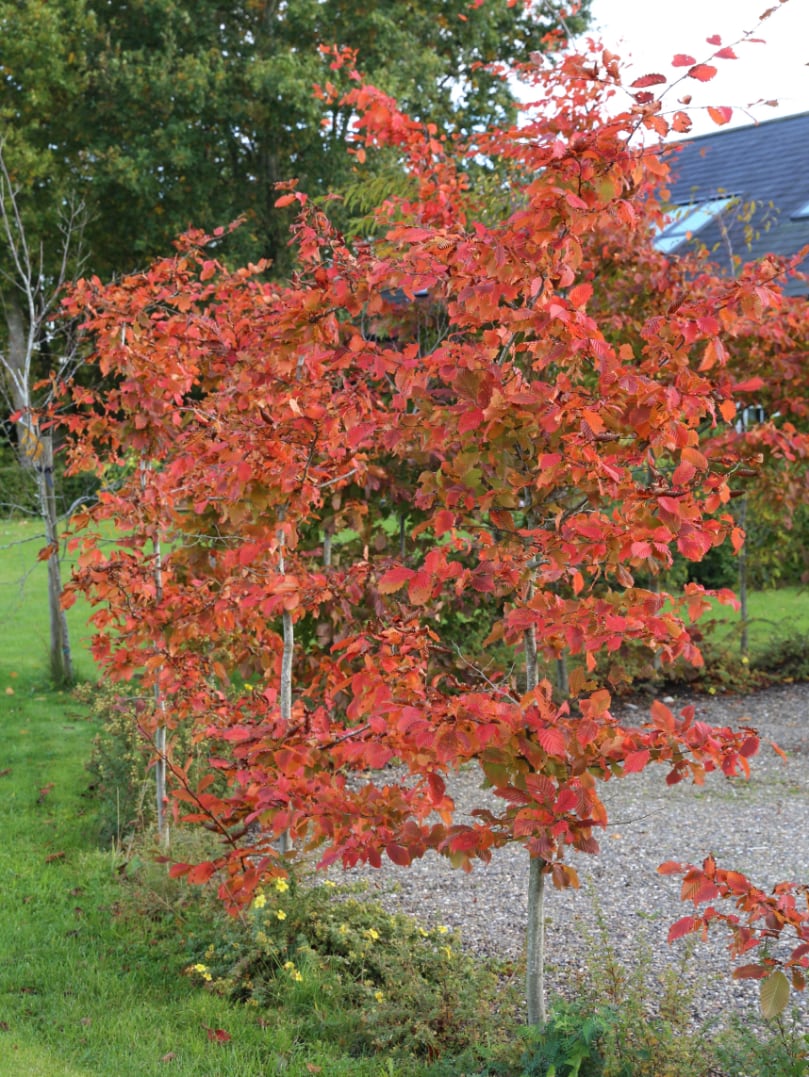
Over 20 years ago, a hornbeam seedling with particularly red autumn colours was spotted at Mount Pleasant Tree Nursery, Rockhampton, Gloucestershire. The original tree can be seen in their small arboretum, and trials across the UK found the red colour consistent even on alkaline soils, which is fairly unusual for trees turning deep red. Like beech, clipped hornbeam hedges and topiary display marcescence in their juvenile growth, meaning the withered leaves stay attached to the stem through winter, providing a coppery glow when lit by the low winter sun. On ‘Rockhampton Red’, the red colouring appears in early October and tends to persist until mid-late November, when the leaves turn the same yellow and brown as all other hornbeams do. As this cultivar needs to be grafted, plants are considerably more expensive than normal hornbeam, but the colour is outstanding. Imagine hedges or clipped shapes in this blood-orange tone, as a backdrop to vibrant violet asters and rich velvety dahlias in autumn.
Another variety of native British tree we saw, chosen for outstanding red autumn colour, was the field maple Acer campestre ‘Evenley Red’. Field maples tend to have nice buttery yellow autumn foliage, but ‘Evenly Red’ certainly steps up the drama. The original plant was spotted in a hedgerow at Evenley Wood Garden in Nottinghamshire.
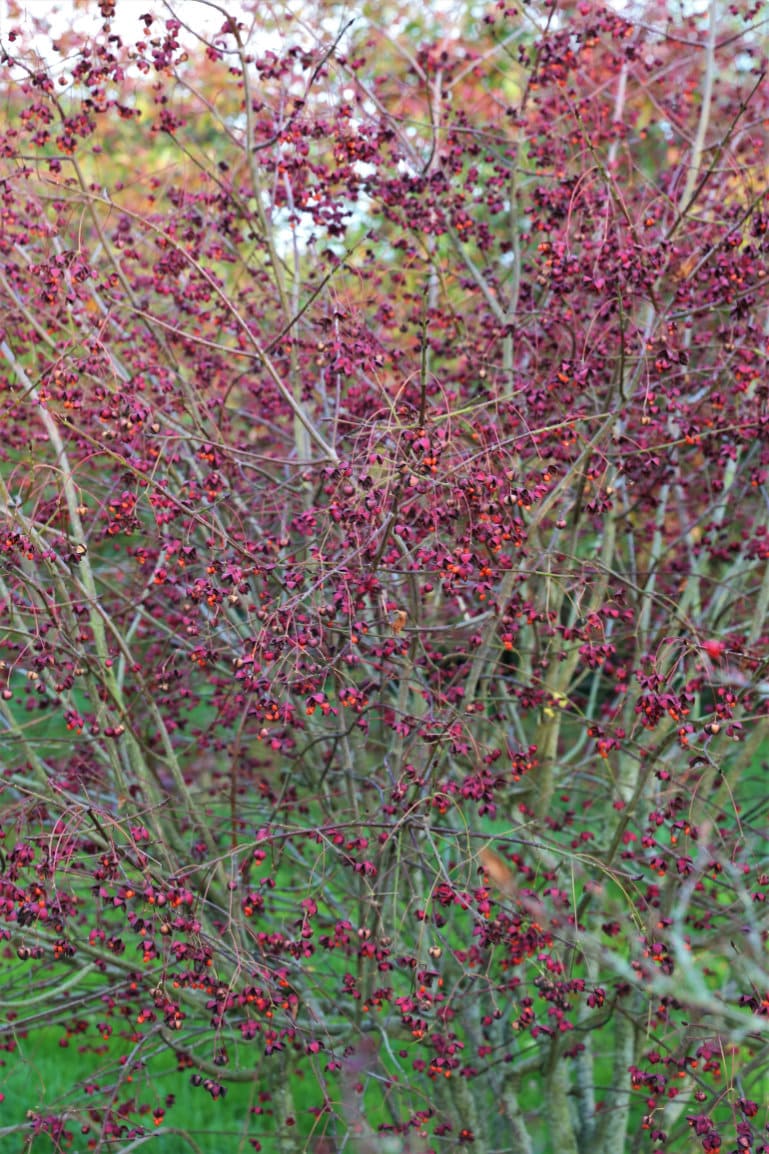
We were bowled over by the abundance of dark red fruit, providing an almost gothic appeal. Wonderful early autumn colour too, before leaves drop to show off those enchanting spindle fruits, opening to reveal dangling orange seeds.

The multi-tonal fruit, silver-white leaf undersides and silvery papery bark make for a very distinguished tree.

While fiery rich oranges, purples and reds are the most celebrated autumn colours, plants offering pastel tones of pink and peach are perhaps overlooked. With a simultaneous display of autumn colour and fruit, ‘Poort Bulten’ really stood out from the crowd.

Difficult to capture on camera, the foliage has a grey-blue quality to it, more pronounced when they emerge in spring with clear white blossom. The fruits are the size of small grapes. Expect good drought tolerance given its origins in Greece and south-east Europe.

The next day we headed over to Hergest Croft Gardens in Shropshire. Just by the entrance, Cornus × elwinortonii Venus was shining like a beacon. This is a hybrid between East Asian Cornus kousa, and Cornus nuttallii from western North America. These are flowering dogwoods, nothing like the winter stem dogwoods most people are familiar with. Flowering dogwoods have huge showy bracts in white, creams and pinks in early summer, ageing gracefully as strawberry-like fruit appear that decorate the bare stems into winter. They have a graceful form and mesmerising branch structure. When in full flower, the blooms cover almost the entire canopy of the tree. Many flowering cornus have a fairly slow rate of growth, but these hybrid cultivars are much more vigorous, and have better stress tolerance too. The other group of hybrids with this hybrid vigour, and many more cultivars to choose from, are Cornus × rutgersensis. Many of these cultivars are in the Stellar Series. They are hybrids between Cornus kousa as before, and Cornus florida, from eastern North America and Mexico.

This year I’ve been noticing how evergreens with glaucus blue foliage provide an excellent foil for autumn colour. Vitis betulifolia growing through the slightly pendant glaucus foliage of Chamaecyparis pisifera ‘Filifera’ was a sight to behold. This species of grapevine is not easy to get hold of, but there’s lots of other options within the grapevines (Vitis) which will drape themselves through the canopy of trees, or virginia creepers (Parthenocissus) which will cling to bare tree trunks.

I was visiting the garden with Jack Aldridge, who told me to always look out for plants with the word ‘insignis’ in the name. The Latin word translates to ‘remarkable, distinguished, outstanding’, so it’s a good sign the plant has something really impressive about it. The huge hanging chains of wingnuts can be over a metre long. Unlike other species of Pterocarya, this species doesn’t produce suckers at the base of the trunk. Hailing from riverside conditions, these trees are suited to fairly wet soil conditions, but also tolerating the dry summers we’re seeing.
Many thanks to Jack Aldridge, John Grimshaw, Alastair Gunn and Chris Sanders for letting me tag along to Cherry Tree Arboretum, and John Ravenscroft for letting us explore the magnificent collection. And thanks again to Jack, and John and Rachel Wood for showing me around Hergest Croft.
Photography by Owen Hayman
Owen Hayman
Owen joined the Bestall & Co planting and aftercare team in spring 2019. He is an RHS qualified horticulturist, holding a full Level 3 Diploma in Horticulture, and recently came in the top 3 at the Northern Regional Final of The Young Horticulturist of the Year 2019. After first doing a foundation diploma in Fine Art, he went on to gain a degree and masters in Plant and Soil Science from the University of Sheffield in 2014. Owen worked as a researcher on various field research projects in Alaska, Panama and Borneo. When not away in the field, he became obsessed with visiting gardens and nurseries across the British Isles and the Netherlands, developing his own garden, and then taking on a walled allotment garden as a personal project. He realised his true passion was in horticulture, and so moved away from academia and into the world of specialist plant nurseries and professional gardening.
Owen is now studying the Wisley Diploma, but continues to write articles for us on a monthly basis, and we're delighted to maintain contact with such a passionate and knowledgable plantsman.

